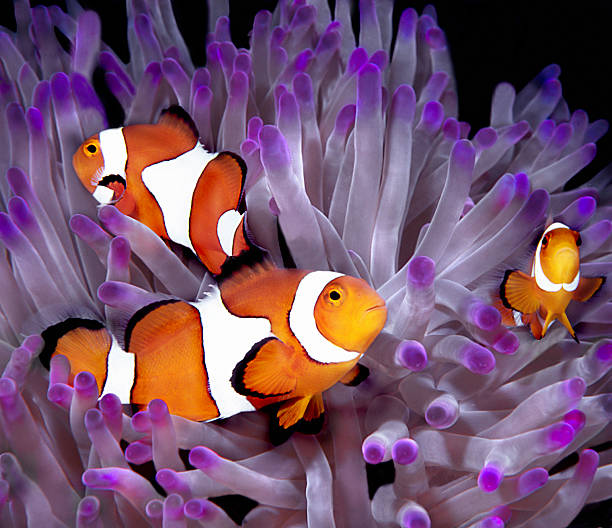In the vast underwater realm of the coral reef, among the vibrant hues and bustling marine life, one little fish grabs our attention with its striking appearance and endearing behavior – the clownfish. Made famous by the animated film “Finding Nemo,” these captivating creatures have become beloved icons of the ocean. Join us as we dive into the world of clownfish, exploring their unique characteristics and uncovering the secrets behind their fascinating lives.
Clownfish, also known as anemonefish, are small fish belonging to the family Pomacentridae. They are found in the warm waters of the Indian and Pacific Oceans, usually residing in tropical coral reefs. While there are 30 recognized species of clownfish, each with its own distinct coloration and pattern, they all share some common traits that make them truly special.
The most recognizable feature of clownfish is their vibrant coloring. These little fish come in a variety of shades, including bright orange, yellow, red, and even black, adorned with unique patterns of stripes and spots. Their striking appearance serves a crucial purpose – it acts as a warning signal to potential predators. Many species of clownfish have a protective coating on their skin which makes them toxic and unpalatable to predators, making them more confident and less likely to be preyed upon.
One of the most remarkable aspects of clownfish is their symbiotic relationship with sea anemones. These elegant, stinging creatures provide both shelter and protection to the clownfish. The clownfish find safety within the tentacles of the anemone, which ward off potential predators with their venomous cells. In return, the clownfish bring food to the anemone by consuming small invertebrates and leftovers from the anemone’s meals. They also help to enhance water circulation around the anemone by constant swimming, providing oxygen and nutrients. This unique partnership showcases the delicate balance of nature and the remarkable adaptations that have evolved over time.
Clownfish possess interesting social structures within their small groups, typically consisting of a dominant breeding pair and several smaller, less dominant individuals. The breeding pair, made up of a larger female and a smaller male, are the heart and soul of the group. They work together to defend their territory and care for their offspring. If the female dies, the male will undergo a biological transformation and take her place. This fascinating adaptation ensures the survival and continuity of the group.
One cannot discuss clownfish without mentioning their playful and curious nature. Observing them within their kingdom amidst the coral reefs is a delight. These charming fish dart around their anemone homes, exploring their surroundings with great enthusiasm. They showcase distinct personalities and engage in elaborate courtship displays, which include energetic movements and ritualistic behaviors. Watching their interactions is a joyous reminder of the incredible diversity and beauty found in nature.
While clownfish have gained popularity through their portrayal in popular culture, it is imperative to consider the challenges they face in the wild. Coral reef destruction, climate change, and overfishing pose significant threats to the survival of these captivating creatures and their fragile ecosystems. It is crucial that we strive to protect and conserve their habitats, embracing sustainable practices that ensure their continued existence for generations to come.
In conclusion, clownfish are the colorful stars of the coral reef, captivating our hearts with their vibrant appearance, fascinating behavior, and unique symbiotic relationship with anemones. They remind us of the intricate connections and adaptations found in the natural world. As we continue to explore and appreciate these remarkable fish, let us also strive to protect and preserve their fragile habitats, ensuring that the charm and beauty of clownfish continue to grace our oceans for eternity.






